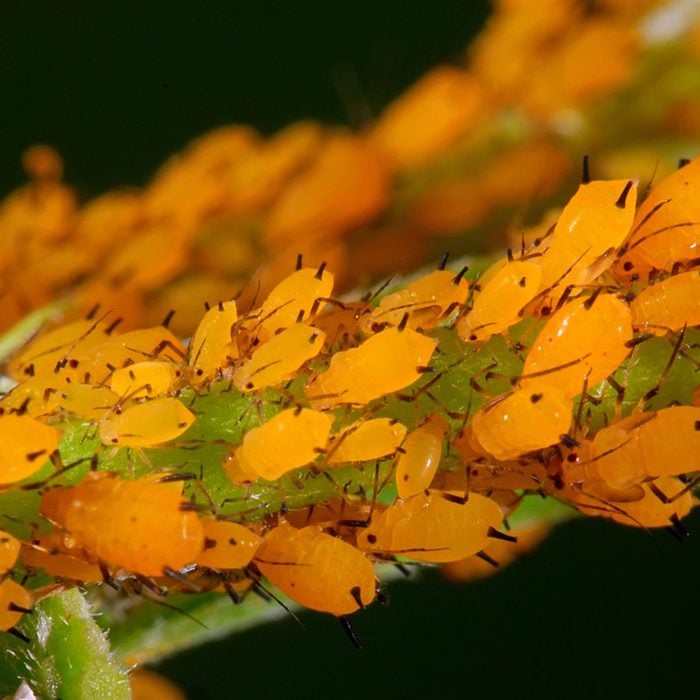
Aphids
These 1/6-inch pear-shaped creatures pierce plant tissues to suck out sap. Affected plants often form puckered leaves, show stunted growth and can die without treatment. Moreover, the honeydew (a sweet, sticky substance secreted by aphids) promotes the growth of sooty mold and attracts ants, which protect the aphids because they want the honeydew.
How to get rid of aphids
Wash plants with a strong spray of water to dislodge aphids, or remove and destroy affected plant parts. Organic solutions include spraying with horticultural oil (petroleum- or vegetable-based oil used to smother insects), insecticidal soap or neem (insecticide made from a tropical tree by the same name). You can also buy ladybugs, which feed on aphids.
Discover these other natural remedies for pest control.
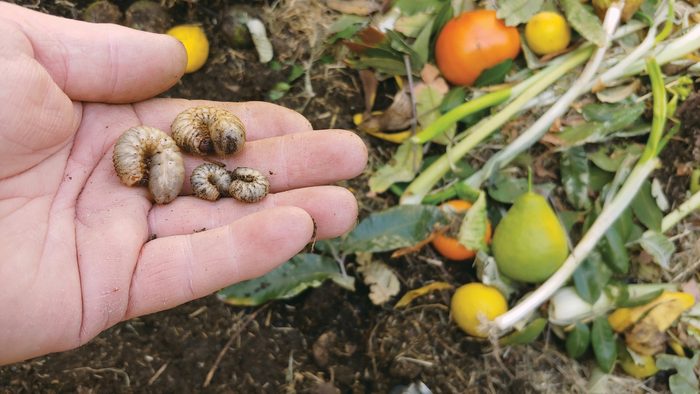
Cutworms
If your spring veggies are chewed off at ground level, cutworms are the likely culprit. They typically attack stems, the first part of a plant they encounter, so if a newly planted seedling has been felled like a tree in the forest, that’s a sign of cutworms. Cutworms are fat, one-inch-long moth larvae that hide beneath leaves or within the top layer of soil during the day and feed on plants at night.
How to get rid of cutworms
Protect plants with a 2-to-3-inch collar, made from cardboard, plastic or thin metal, pushed an inch into the ground. If damage occurs later in the spring, consider applying Btk (Bacillus thuringiensis kurstaki).
You can also cultivate soil shallowly before planting and remove the curled up cutworms by hand (or let robins do the dirty work). Another solution is to set seedlings out a few weeks later, when they’ve grown thicker stems to resist cutworms.
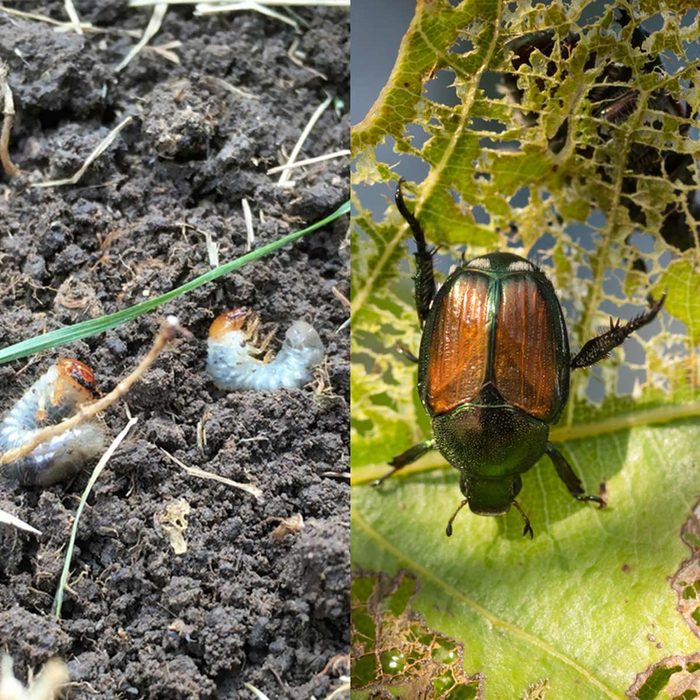
Japanese Beetles
Adult insects are metallic blue-green and bronze, 1/2-inch beetles. Larvae are fat, white grubs with brown heads. Japanese beetles skeletonize the foliage of flowers, vegetables and fruits. Grubs feed on the roots of grass and other plants, destroying lawns and pastures.
How to get rid of Japanese beetle adults
Shake them from plants into a jar of soapy water early in the morning, when they’re less active. You can also spray with insecticidal soap or use floating row covers (extremely lightweight fabric placed directly on plants to keep insects from laying eggs).
How to get rid of Japanese beetle grubs
Btg (Bacillus thuringiensis galleriae) is a naturally occurring soil bacteria that kills these beetles and grubs. Beneficial nematodes (microscopic worms that occur naturally in the soil) Heterorhabditis bacteriophora can also help with grub control.
Did you know that some beetles are beneficial garden bugs?
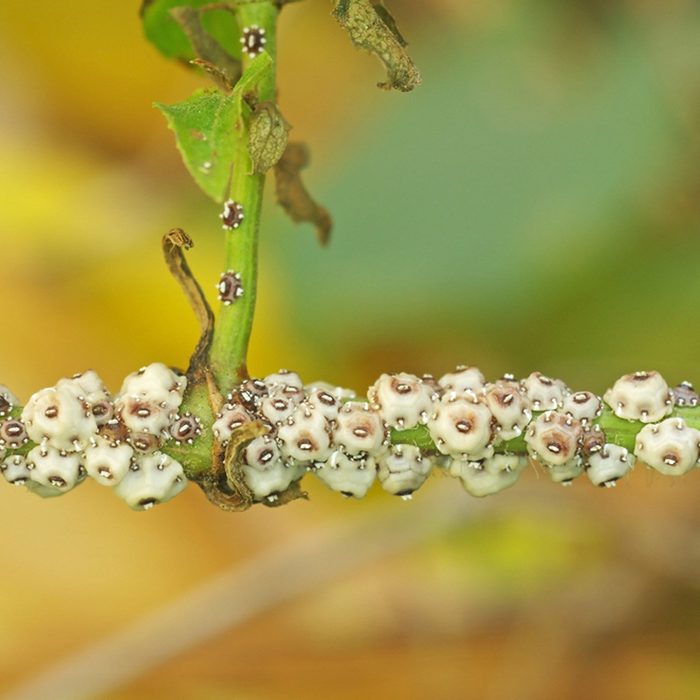
Scales
You’re most likely to notice adult female scale insects, which look like bumps on plant stems, leaves or fruit. Males are small flying insects, while larvae are tiny, soft, crawling insects. Scale insects suck plant sap, weakening plants and causing foliage to turn yellow and drop off. In addition, honeydew is deposited on leaves and fruit. It’s unsightly and can foster disease.
How to get rid of scales
With small infestations, remove and destroy infested plant parts or use a soft brush and soapy water to scrub scales from twigs, then rinse. Larger infestations should be treated with dormant oil or summer oil spray.
If you’re noticing holes in your canna leaves, you might have canna leaf rollers.
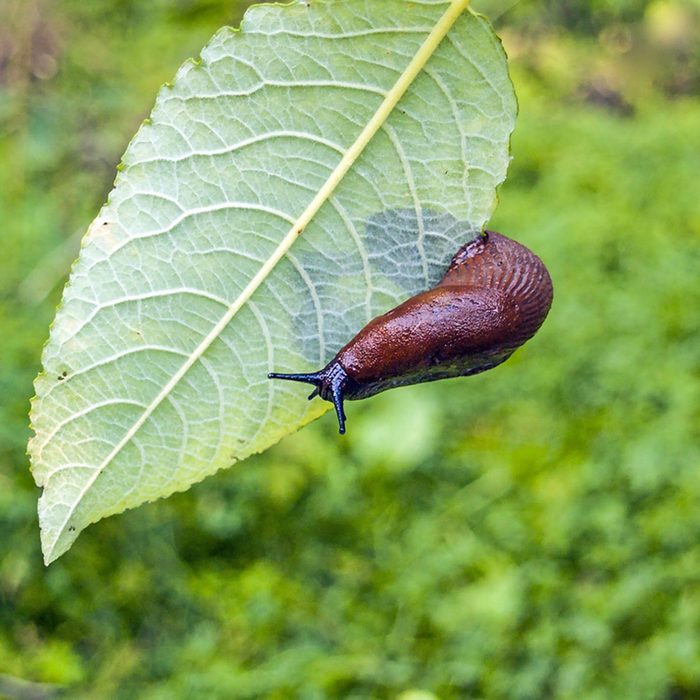
Slugs
Slugs are slimy, soft-boddied mollusks, usually about an inch long and either brown or gray in color. They hide out in shady spots during the day and do most of their feeding at night. They’ll eat just about any garden plant, leaving unsightly holes in the foliage. While common in moist, humid climates, they’re more prevalent if the weather has been rainy.
How to get rid of slugs
Fill empty tuna fish cans with beer and place in the garden (slugs are attracted to the beer and will fall in and drown). You can also handpick early or late in the day, then sprinkle salt on the slugs or freeze them. Other options include sprinkling sharp sand, wood ashes, crushed seashells or diatomaceous earth (a naturally occurring, soft, sedimentary rock formed from fossil remains) around the stems of plants to discourage slugs from squirming their way to the plant.
Find out how to get rid of fungus gnats on houseplants.
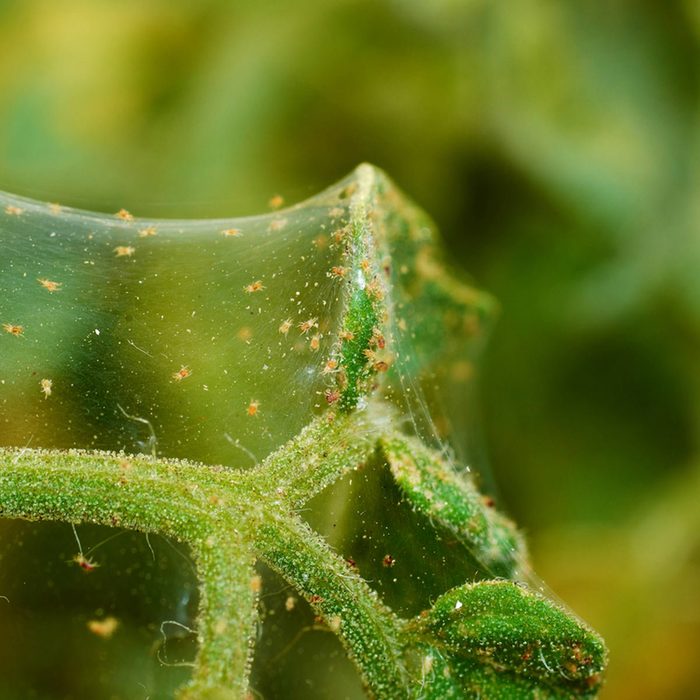
Spider Mites
These tiny pests, which are related to spiders, feed on plant juices. In large numbers, they zap a plant’s vitality by causing leaves to turn yellow, brown or gray and drop off. Other telltale signs of spider mites: fine silk webs on the undersides of leaves.
How to get rid of spider mites
Introduce predatory insects that feed on spider mites, such as ladybugs, praying mantises and assassin bugs. Or try this remedy from Garden Writers Association Hall of Famers Doc and Katy Abraham, authors of The Green Thumb Garden Handbook: mix 1/2 cup buttermilk and 4 cups of wheat flour with 5 gallons of water. Spray on the tops and bottoms of foliage. Repeat in 10 days to take out any that hatch in the interim.
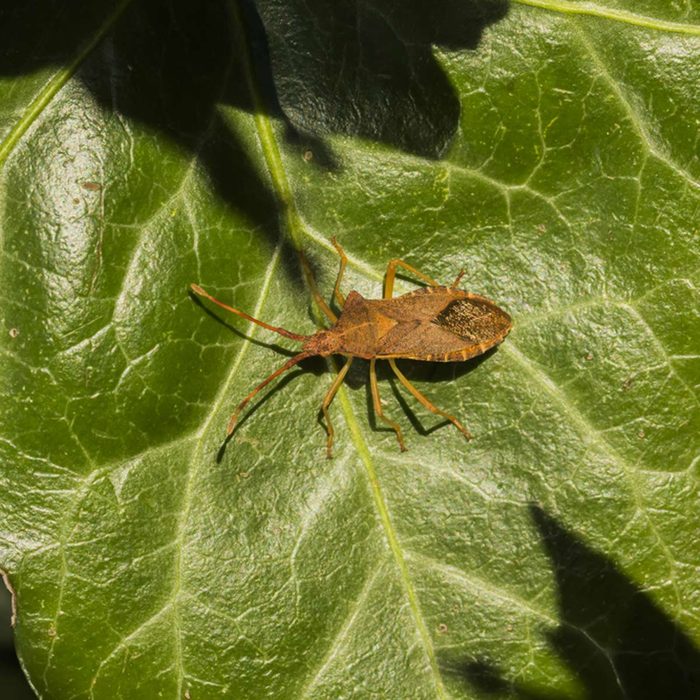
Squash Bugs
As the name would indicate, squash bugs are most commonly found on squash plants, as well as pumpkins. They’re large, look as if they’re wearing armor, and resemble stink bugs. They suck juices out of plants and cause wilting.
How to get rid of squash bugs
Handpick and drop in a jar of soapy water. Clean up infested plants at the end of the growing season and dispose in the trash (this interrupts the squash bug life cycle). Other options: scrape off egg clusters (found on the backside of leaves) or spray neem on egg clusters and juvenile squash bugs. Because squash bugs mate early in the season, covering with floating row covers until pollination time also works.
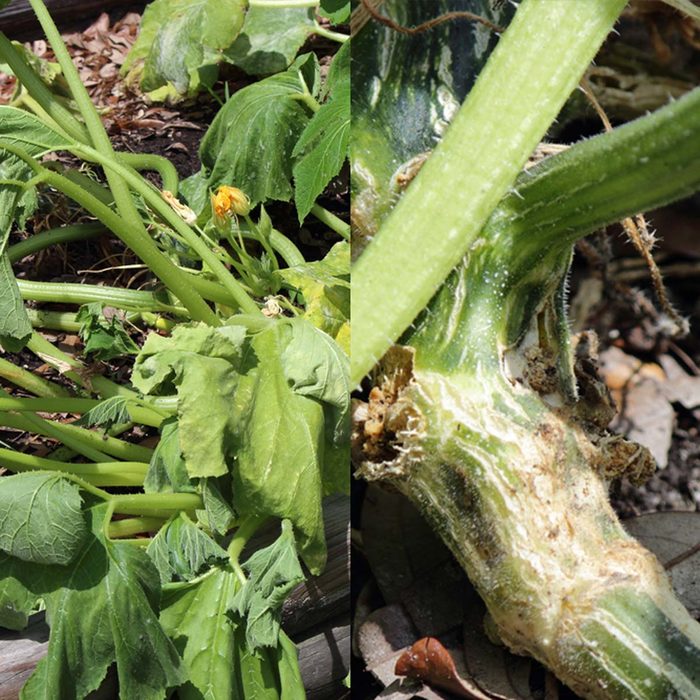
Squash Vine Borers
You’re more likely to spot damage to your squash plants than you are to see the squash vine borers themselves. That’s because these 1-inch-long white caterpillars feed from inside the stems. Plants wilt drastically, as if they’re thirsty for water. Eventually, the whole vine dies. In addition to wilting, look for a swollen stem and small piles of sawdust-like material called frass (debris or excrement produced by insects), on the ground.
How to get rid of squash vine borers
Crop rotation is a good practice, and planting a few weeks later in the season and using a row crop cover until flowering. Grow long-stemmed varieties rather than compact hybrids. As the long-stemmed varieties grow, they may start to take root at various spots. You can add soil where stems are rooting, so these secondary sections are available to support the plant if the main stem dies. If you see a swollen stem, carefully slit one side and extract the borer. Then place the stem on the ground and cover with soil to encourage rooting.
If you find a spotted lanternfly in your yard, this is what to do.
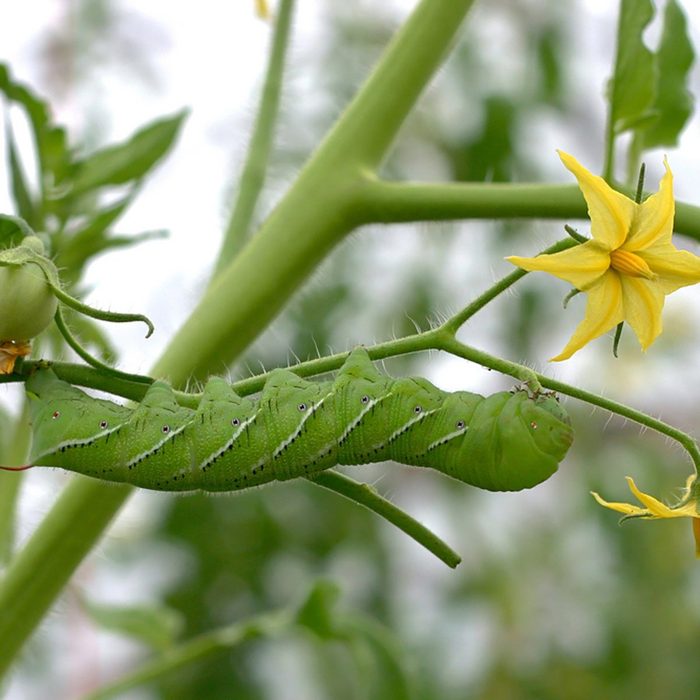
Tomato Hornworm
These bright-green, heavily striped caterpillars looks like something from a sci-fi show, especially with the horn-like tails. They eat the foliage of tomatoes primarily, but also peppers, potatoes and eggplants.
How to get rid of tomato hornworms
Although camouflaged, tomato hornworm caterpillars are large and easy to spot if you’re looking for them (they leave dark green to black droppings on foliage). So handpicking and dropping into soapy water is a good solution. You can also spray foliage with Bt (Bacillus thuringiensis), a soil-dwelling bacterium which acts as an insecticide when ingested. Or introduce predatory insects (ladybugs prey on eggs and young caterpillars, parasitic braconid wasps lay eggs on larger caterpillars).
Learn how to get rid of stink bugs in your garden.
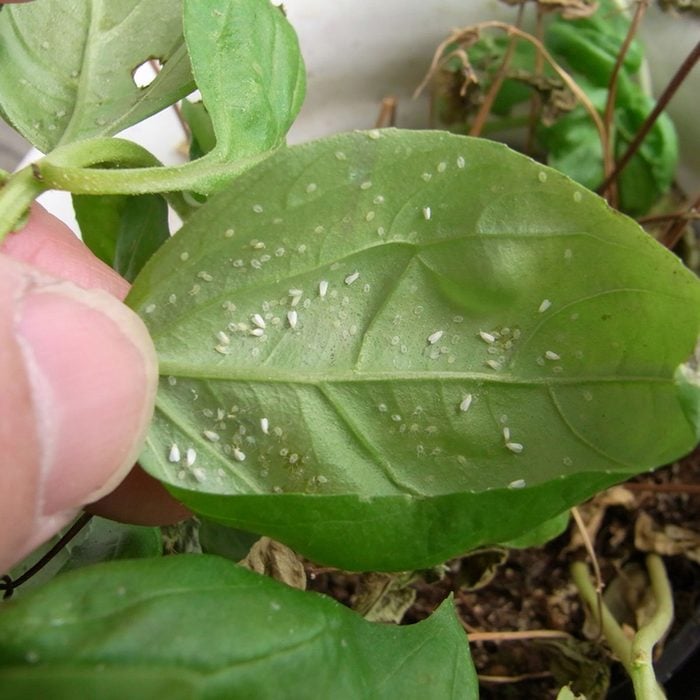
Whiteflies
These tiny sucking insects weaken and stunt plant growth and also leave behind a sticky honeydew that leads to fungal disease on leaves.
How to get rid of whiteflies
Blast them off plants with the hose, then coat plants with insecticidal soap, getting both the tops and undersides of leaves. Do this early in the day or later in the evening, when temperatures are cooler. In lieu of insecticidal soap, you can substitute lemon-scented liquid dish soap, 1 tablespoon per gallon of water.
Learn how to keep bees and wasps off of hummingbird feeders.
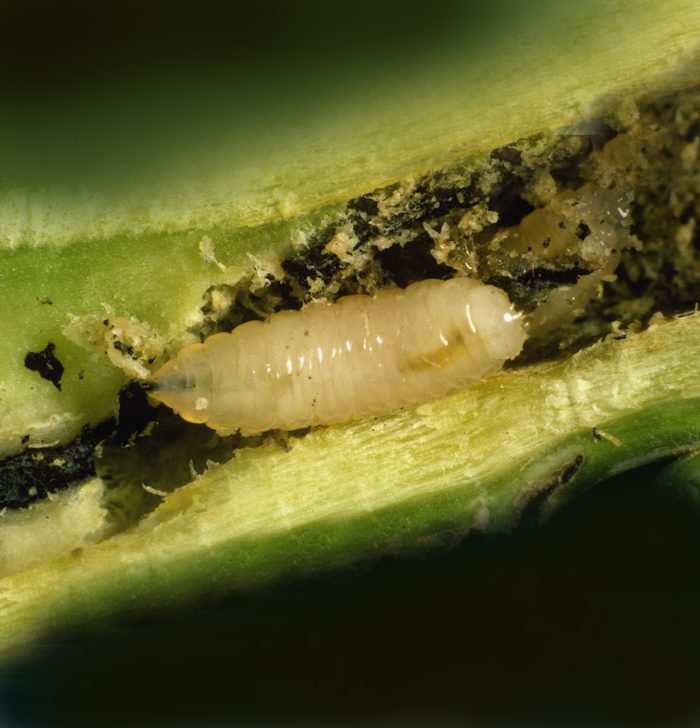
Cabbage Maggots
The first sign of cabbage maggot damage is the wilting of Brassica plants, or the yellowing of leaves.
How to get rid of cabbage maggots
Stay proactive by rotating crops and using floating row covers to keep the adults from laying eggs in soil where members of the cabbage plant family were not previously grown.
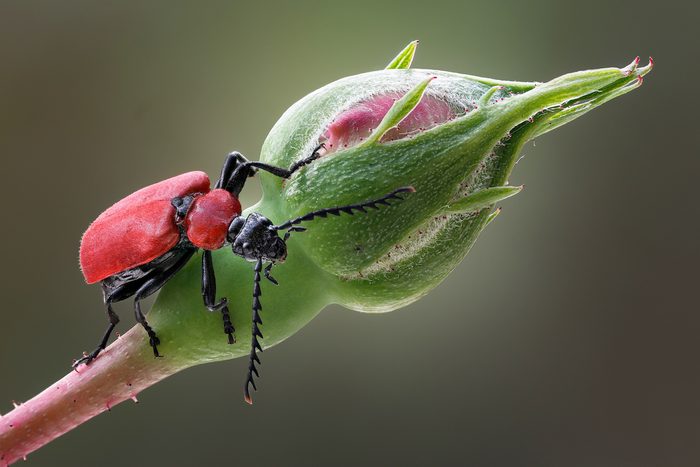
Red Lily Beetles
Look for irregular holes in the stems, buds and leaves of lilies, a sign of red lily beetles.
How to get rid of red lily beetles
Handpick the scarlet-colored adults, orange or yellowish larvae and orange-colored egg masses, or use a Neem oil spray every five to seven days, starting right after eggs hatch for the best results.
Next, find out if gardeners should remove milkweed bugs.
Additional reporting by Amy Grisak
